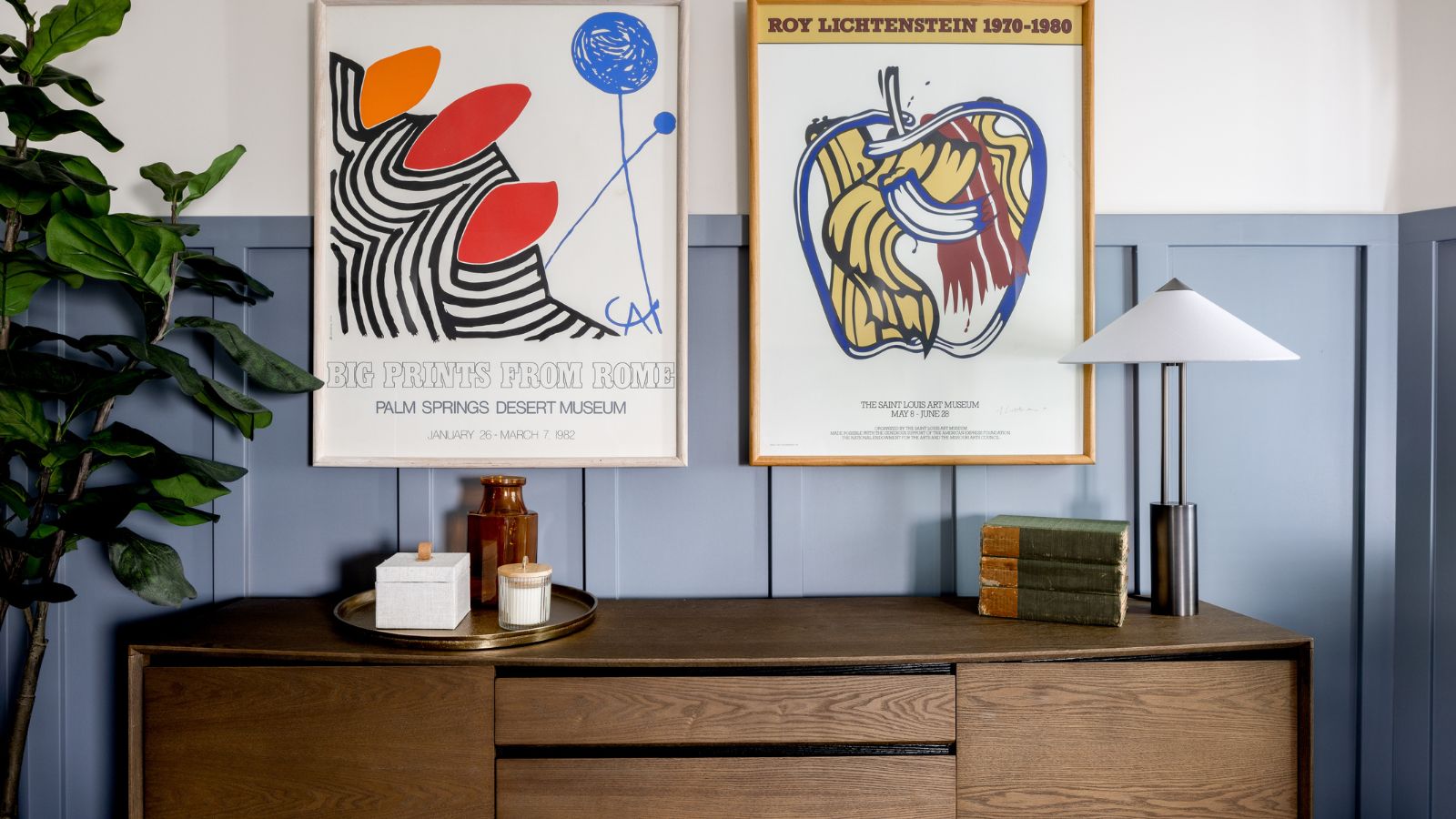
I am a collector, I like my clutter, it's part of my slightly eclectic style. But I knew I was taking things a bit far when I was struggling to find any space to add in new pieces I had picked up second-hand, and things were starting to look off balance. So I went back to basics and tried out the classic interior design method – the 3-5-7 rule.
Also known as the rule of three, or just decorating in odd numbers, designers had told me this not-so-secret interior design tip would help me keep that slightly unruly look that I love so much, but make it appear a bit more curated and tidy.
These odd groupings, like three paintings hung side-by-side or a group of five ornaments positioned on a bookshelf, allow for the perfect balance of scale and height, something my decor was lacking. So I gave this basic interior design rule a go, and the 3-5-7 method delivered everything it promised.
What is the 3-5-7 styling rule?
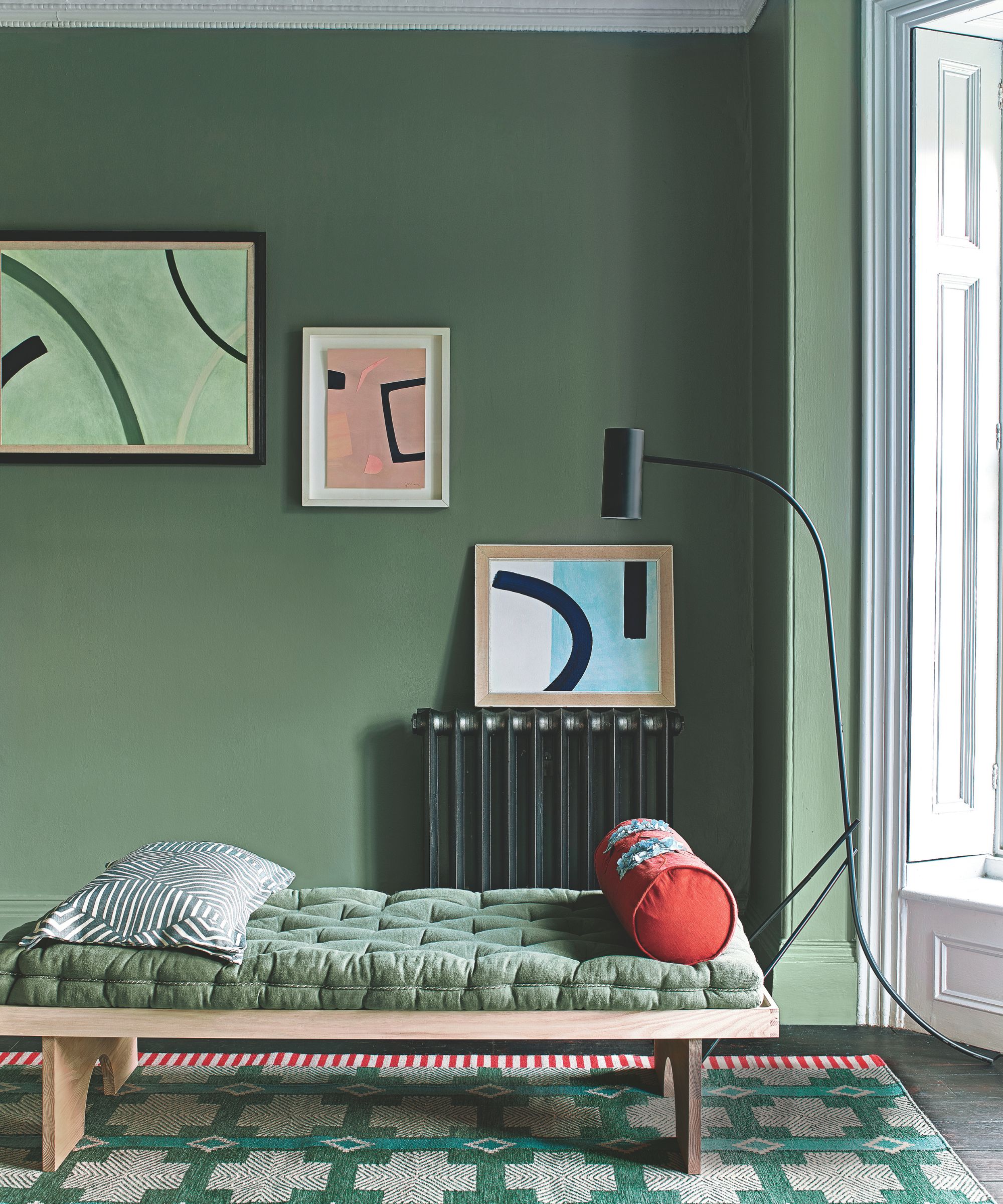
Let's first just clear up what the 3-5-7 rule actually is.
Perfectly summed up by interior designer Mollie Ranize from Dmar Interiors, 'The 3-5-7 styling rule is a simple yet effective principle that brings visual balance and interest to any arrangement. By grouping objects in odd numbers – three, five, or seven, you create a natural rhythm that guides the eye and enhances the overall composition.'
Interior designer Nina Lichtenstein has long been using the method to create interesting displays. She says, 'In interior design, balance is everything, but balance doesn’t always mean symmetry. Enter the 3-5-7 styling rule, a go-to strategy for curating vignettes, styling shelves, arranging throw pillows, or pulling together any decorative display. Rooted in the simple idea that odd numbers are more visually appealing than even ones, this rule offers an approachable framework for creating that elusive “effortless” look.'
What I learned from the 3-5-7 styling rule and where it worked best
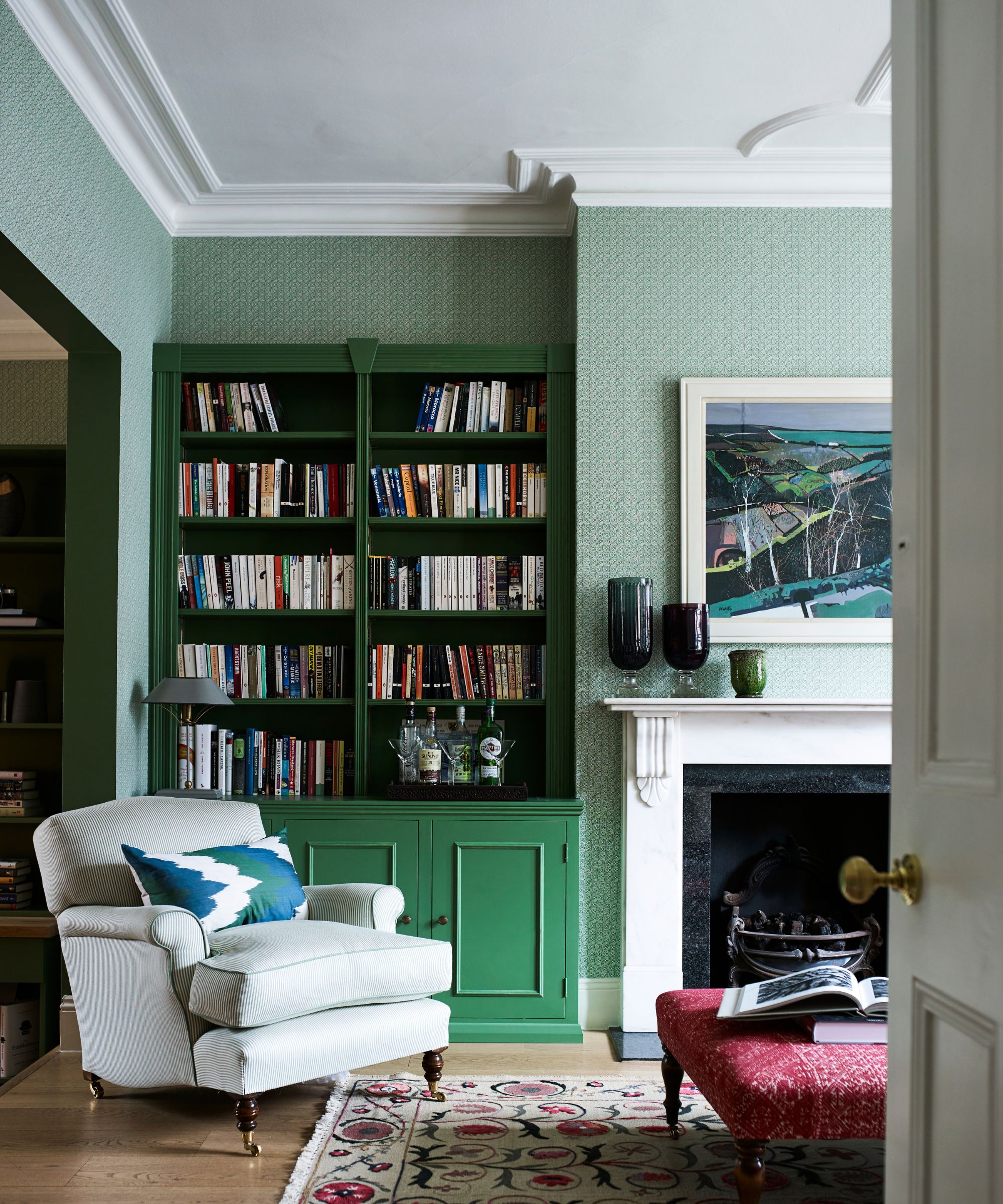
To see if the method was worth all the hype, I thought it wise to focus on the most prominent area and one that always attracts attention, the fireplace.
Originally, my mantel decor had a range of pieces lined up in a row. Admittedly, the arrangement lacked focus, which meant that some pieces stood out more than others. So, I took everything off, placed the large framed picture at the center of the area, and then worked around it, grouping the smaller pieces in threes and fives, creating little pockets of decor on either side of the central portrait.
The result was a far more considered display of pieces that all worked side by side and had purpose individually and collectively. But, it's important to vary height, shape, and texture when working in odd numbers, as it's the contrast that makes the arrangement sing. When I asked Nina specifically about my mantel, which is home to many candles, she explained, 'A trio of matching candles won’t do much, but a tall taper, a squat pillar, and a delicate tea light holder? Magic.'
She adds that it's helpful to group by theme or color. She says, 'Items in an odd-numbered cluster don’t have to match, but they should speak to each other in some way. Similar tones, materials, or moods help tie the group together.'
This elegant set of candle holders will elevate any empty mantel, providing the perfect amount of height and variety when positioned with other smaller pieces.
Fill this vintage-inspired vase with pretty stems and place it at the heart of your mantel with a pair of tall candlesticks for a statement display that fulfills the 3-5-7 method.
No good mantel is complete without a framed picture, and this detailed dog drawing is hard to resist. Just remember to consider the decor around the picture before hanging it.
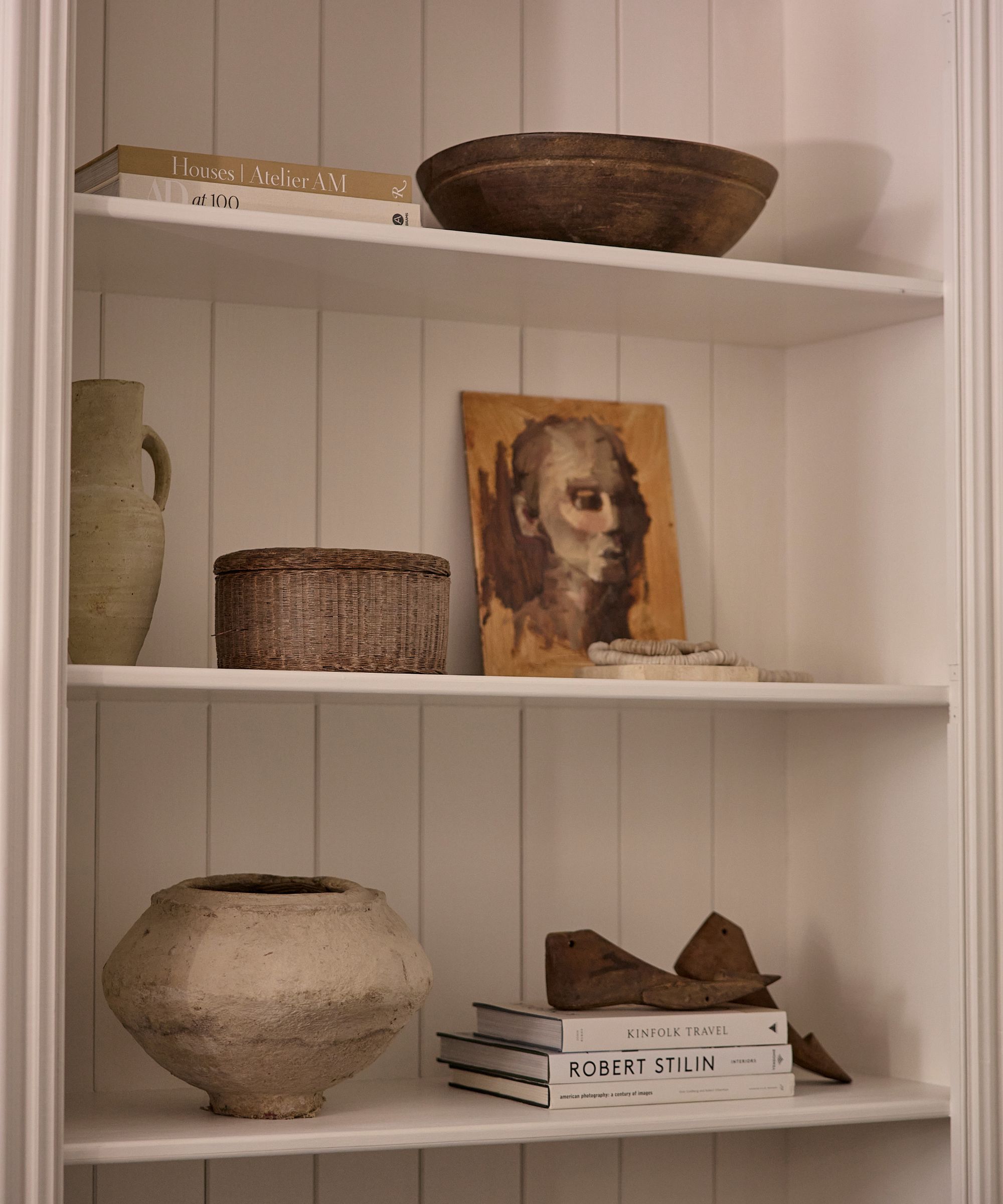
The beauty of the 3-5-7 method is the impact it creates, even when you're decorating a shelf with tiny trinkets or rearranging pieces on a dresser by varying heights and textures. By acknowledging the purpose of each item and maintaining a meticulous eye, your overall arrangement will stand out and feel more cohesive.
Mollie says, 'This approach is especially helpful when styling shelves, where mixing items with different textures, finishes, and functions, such as candles, books, greenery, pottery, and boxes, adds depth and personality.'
My bookshelf did already have some order to it, with all of my books grouped into colors, but I wanted to test out the rule here too to give them a bit more depth. I decided to reposition some of the scattered trinkets that adorned the shelves by placing them according to their heights and textures.
Taller decor was then placed beside a shorter ornament, like my ceramic jewellery dish next to my vintage mannequin hand. The pieces framed the bookshelf rather than just taking up space, giving them standing and importance amongst the books.
Placed in a group of other small trinkets, this marble trinket tray will shine and bring a luxurious earthiness to your bookshelves.
There's nothing like a pop of color amongst endless shelves of books. This vintage-style bud vase will bring life to a one-dimensional shelf, particularly when grouped with other ornaments of contrasting textures and heights.
Marble always elevates a surface, so this pair of onyx bookends is a no-brainer if you want to bring some sophistication to your shelf. The bonus is they'll provide height variety when positioned at either end of your stack.
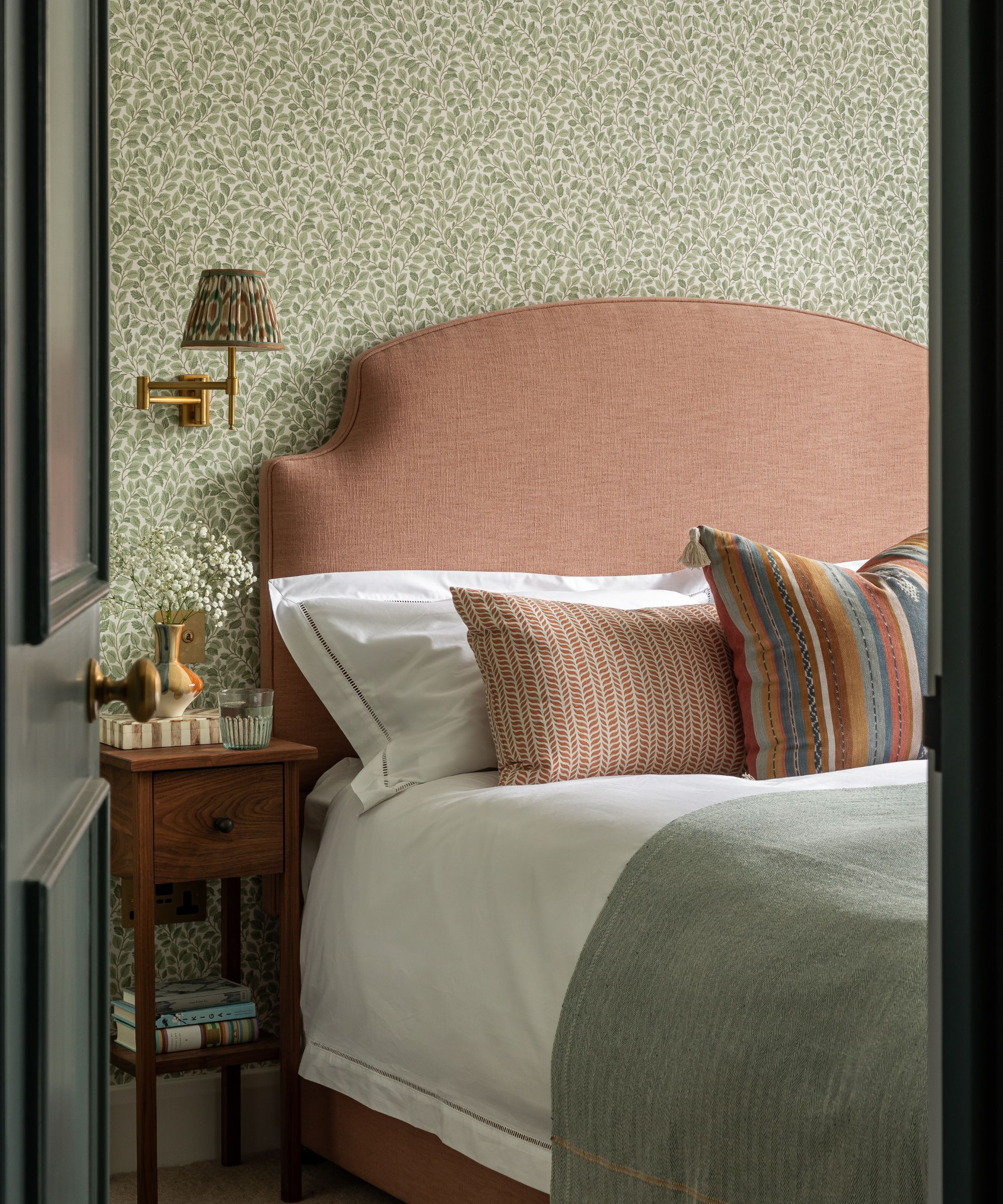
The final place I shifted my attention to was the bed. No good bed idea is complete without a good set of throw pillows, so following the 3-5-7 principles, I simply took away the fourth pillow that was already on the bed.
Having only three pillows gave each piece more prominence and stopped the area from feeling overwhelmed. Having one large sham at the center with two on either side meant less room was taken up with a mound of cushions, giving each equally attractive piece more presence, making my throw pillows look more expensive.
Nina often uses the odd number method for pillows. She told me, 'Three throw pillows on a sofa can feel intentional and modern. Five works beautifully for sectionals or larger seating, adding just enough volume without tipping into excess. The rule even extends to the size variation within the group, for example, one oversized lumbar flanked by two standard squares, or three pillows of slightly different sizes and textures to add character.'
This statement bolster pillow will bring life to plain white bedding, transforming the area from unremarkable to snug and inviting. Pair with two smaller square pillows for a considered arrangement.
Whether placing this pretty pillow at the heart of your bed or using it to complement a larger cushion, there's nothing like a good old dose of pattern to bring character and warmth to a bed.
Ticking the texture box, this delicate ruffled sham would look best at the center of a bed or as a pair, creating a statement that invites you to lounge and admire your new display.
I was unsure how much difference styling in odd numbers could make, but after testing the method, there's definitely a reason it's a long-established practice, as it's made a real difference to my scheme. Rather than just displaying pretty objects without acknowledging them as a group, the 3-5-7 styling method meant that every piece of decor worked together to create a well-thought-out arrangement that gave each piece equal standing.
A surprisingly simple rule, I'd encourage you to try it out at home by starting small. It could be as straightforward as rearranging your throw pillows on your bed or couch. And once you see the success of this easy method, there are plenty of other tips from stylists for every room that will help you create a thoughtful, one-of-a-kind home.







